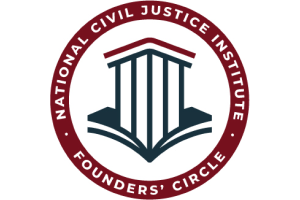Client Reviews
Crane Accidents
On any construction site, cranes are recognized as among the most expensive, important – and most dangerous – pieces of equipment.
Construction accident attorneys at Associates and Bruce L. Schiner, Attorneys for the Injured, know that when a crane fails or is improperly handled, not only do companies miss deadlines and grapple with property damage, there is the high potential for injury. Crane injuries on construction sites are often catastrophic, if not fatal.
The Occupational Safety & Health Administration reports there are an estimated 250,000 crane operators and approximately 125,000 cranes in use – not counting the 100,000 used in the maritime industry. But operators aren’t the only ones who risk injury. Everyone on the construction site is at risk, and so too is the general public, depending on where the accident happens.
Potential risks include:
- Electrocution/Electric Shock
- Being Run Over by a Crane
- Crane Collision
- Compression Injuries
- Being Struck by Objects Falling From Crane
- Being Struck by Falling Crane/Crane Collapse
The dangers are heightened when construction companies fail to use the proper crane for the job, don’t properly set up the crane, allow the crane to be operated in bad weather or allow debris and other unsafe conditions around the crane.
The Center for Construction Research and Training conducted a study examining crane accidents across the country in recent years.
What they found was this:
- There were a total of 323 construction worker deaths involving 307 crane accidents between 1992 and 2006. Nearly as many occurred from 2011 to 2017, according to the Census of Fatal Occupational Injuries, which reported 297 crane deaths during that 7-year period, an average of 42 deaths per year.
- Most fatal crane accidents (71 percent) involved mobile or truck cranes.
- Roughly one-third of all crane deaths were caused by electrocutions by overhead power lines.
- Twenty-one percent of crane deaths were caused by crane collapses. These instances were mostly caused by the crane situated on an uneven or unstable surface, overloading or load shift.
- Eighteen percent of construction crane deaths were the result of the worker struck by a crane boom. Most occurred while workers were dismantling the boom.
Crane accidents can occur anywhere construction takes place. One of the worst in Florida’s history was the 2008 crane collapse in Miami, in which two workers were killed and five more injured when a seven-ton crane plummeted 30 stories onto a Miami home. The crew had been working on a 46-story luxury high-rise building.
Until 2012, Florida did not license or regulate cranes. That changed with the passage of H.B. 521/S.B.992, which amends F.S. 489.113. Prior to that, counties were enacting a patchwork of regulations concerning cranes, given the state’s years-long failure to act on the issue. This statute pre-empts all local regulation, and seeks to make into law the recent standards set forth by OSHA.
OSHA regulations govern a host of practices, including development of a site plan for the location of the crane, clearances from above-ground power-lines, proper securing of cranes during high winds, retraction and storage of booms on hydraulic cranes not in use, instructions for use of cranes within the same swing radius and proper inspection of all tower cranes and rigging.
Further, employers are responsible for funding certification and qualification of their current riggers and crane operators, and they have to make sure any new workers tapped for such jobs are properly certified. Certification for crane operators takes four years.
Ultimately, the goal is to ensure prevention of crane accidents and fatalities. When OSHA enacted these rules in 2010, the government anticipated it would reduce the crane accident rate by 20 percent.
Product Liability in Crane Accidents
Unfortunately in cases where the crane is defectively designed or manufactured, employers and operators could take all the precautions in the world, and it wouldn’t matter. Cranes that are poorly-designed, prone to malfunctioning or are missing essential components may be the subject of product liability litigation if someone is hurt.
Standards for the design of cranes and hoists are set by the Crane Manufacturers Association of America. Manufacturers also have to comply with specifications set forth by the ASME/ANSI, which outline safety regulations for commercial hoists and cranes.
Those regulatory standards include the following requirements:
- Safety latches have to be provided for all hoist and crane hooks;
- An electrical disconnect switch has to be provided for all cranes, hosts and crane pendants;
- Bridge cranes and cabs need to have motion alarms;
- Hoist hooks and cranes can’t be repainted;
- New hoists and cranes have to be tested on their load capacity, which must be at 125 percent;
- All hook and hoist blocks have to be clearly labeled as to their maximum capacity.
Our experienced crane accident attorneys are prepared to thoroughly examine the facts of your case and determine the best course of action.
Contact Associates and Bruce L. Scheiner, Attorneys for the Injured, for a free and confidential consultation to discuss your rights. There are no fees or costs unless we win. Offices in Fort Myers, Cape Coral, Naples and Port Charlotte.
Call 800-646-1210 for a Free Consultation












